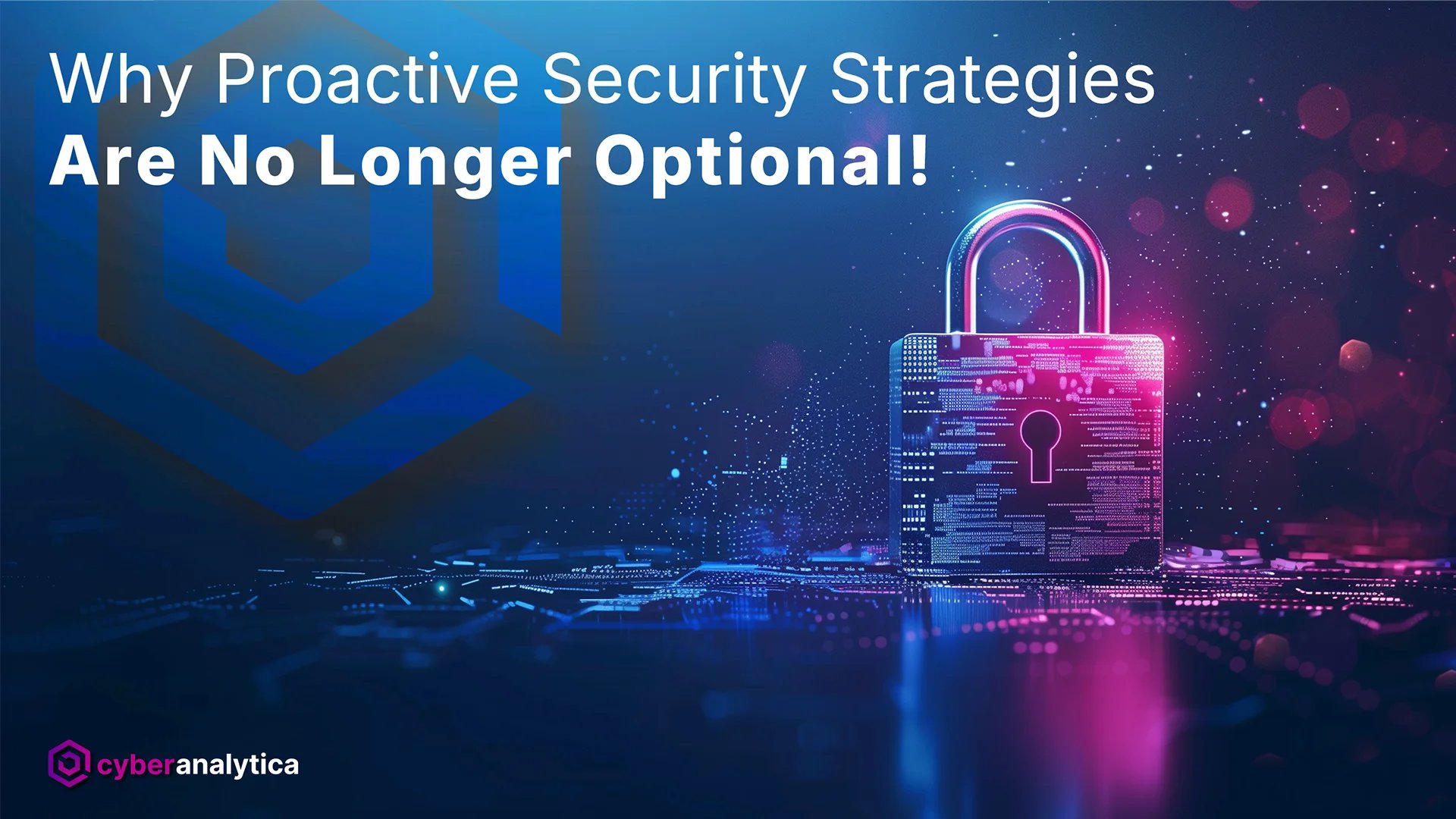The Cybersecurity Paradox: Why Being Secure Today Means Preparing for the Threats of Tomorrow
January 27, 2025
The Cybersecurity Paradox
As we reflect on the current landscape of technology, one truth about cybersecurity remains glaringly evident but rarely discussed: the threats of tomorrow are already incubating today. Despite a large number of organisations focusing on reactive measures—patching vulnerabilities, mitigating breaches, and complying with regulations—this approach often misses a critical reality: cybersecurity is not just about defence; it’s about prediction, adaptation, an evolution.
Imagine this scenario: a company spends millions on cutting-edge firewalls, but a simple phishing email bypasses all defences and compromises sensitive data. This is the cybersecurity paradox—where being truly secure requires more than firewalls and endpoint detection—it demands a mindset shift. In this blog, we’ll explore why proactive cybersecurity strategies are no longer optional, how they differ from the status quo, and what steps organisations can take to stay ahead in an age where the only constant is change.
1. The Illusion of Safety: Why Reactive Cybersecurity Falls Short
Most organisations rely on reactive cybersecurity frameworks. They invest heavily in tools and processes to:
- Detect malware after it has penetrated the network.
- Respond to phishing attacks after an employee has clicked a malicious link.
- Mitigate ransomware after systems have been locked.
This approach is akin to treating a chronic illness with painkillers—it may temporarily relieve the symptoms, but it does little to address the root cause. For example, in the case of a global retailer, a reactive approach failed to prevent a breach that exposed millions of customer records because it was focused solely on known threats.
Why This Fails:
- Delayed Response Time: Cybercriminals thrive on speed, while reactive strategies are inherently slow. A breach that takes minutes to execute might take weeks—or months—to detect.
- Evolving Threats: Attack vectors such as zero-day vulnerabilities or advanced persistent threats (APTs) are designed to bypass known defences. Reactive strategies can’t defend against what they don’t anticipate.
- Resource Drain: Constantly reacting to threats diverts time, money, and talent away from innovation and long-term planning.
2. The Need for a Proactive Cybersecurity Mindset
Proactive cybersecurity shifts the paradigm from responding to incidents to anticipating and preventing them. It’s not about building bigger walls—it’s about understanding the mindset of your adversary, leveraging predictive analytics, and continuously evolving alongside the threat landscape.
Core Tenets of Proactive Cybersecurity:
- Threat Intelligence: Gathering and analysing data on emerging threats to stay one step ahead.
- Continuous Monitoring: Using AI and machine learning to detect anomalous behavior in real time, not after the fact.
- Incident Simulation: Running “what-if” scenarios to stress-test systems against potential attack vectors.
- Collaboration: Partnering with industry peers and sharing intelligence to strengthen collective defences.
For example, a leading financial institution reduced its incident response time by 40% after adopting continuous monitoring and running regular simulations. Such measures not only enhance security but also build confidence among stakeholders.
3. Why Proactive Cybersecurity Is a Business Enabler
Cybersecurity is often perceived as a cost center—a necessary evil rather than a strategic advantage. But proactive strategies can transform cybersecurity into a business enabler.
Benefits of Proactive Cybersecurity:
- Protects Brand Reputation: A single breach can cost millions in revenue and untold damage to brand trust. Proactive measures minimise this risk.
- Enhances Customer Trust: Consumers are increasingly aware of data privacy issues. Companies that demonstrate robust, forward-thinking security practices will stand out.
- Supports Innovation: With robust protections in place, businesses can confidently adopt emerging technologies like IoT, AI, and blockchain without fear of compromising security.
- Reduces Costs: Detecting and mitigating threats early is far cheaper than dealing with the fallout of a major incident.
Consider a case study: A global e-commerce giant implemented proactive cybersecurity measures that not only prevented a potential ransomware attack but also streamlined their compliance processes, saving millions in regulatory fines and downtime.
4. The Future of Cybersecurity: Preparing for Unknown Threats
If the cybersecurity challenges of today are daunting, the challenges of tomorrow will be exponentially more so. Consider:
- AI-Powered Cyberattacks: Machine learning models can now automate phishing, customise malware, and even mimic human behavior to evade detection.
- Quantum Computing Risks: While still emerging, quantum computers could one day break traditional encryption algorithms, rendering current protections obsolete.
- The Rise of Cybercrime-as-a-Service: Hacking tools and expertise are becoming commoditised, lowering the barrier to entry for aspiring cybercriminals.
To prepare for these threats, organisations must adopt futuristic strategies, including:
- Quantum-Resistant Encryption: Transitioning to cryptographic algorithms that can withstand quantum attacks.
- AI-Driven Defence Systems: Deploying AI to counter AI-powered attacks in real time.
- Cyber Resilience Frameworks: Planning for failure by ensuring systems can recover quickly from inevitable breaches.
Imagine a future where cyber resilience frameworks are as integral to business continuity as fire drills are to physical safety. Organisations that plan for these contingencies now will be the ones best positioned to thrive.
5. Building a Proactive Cybersecurity Culture
Technology alone is not enough. A proactive cybersecurity strategy must be underpinned by a strong organisational culture that prioritises security at every level.
Steps to Build a Proactive Culture:
- Educate Employees: Provide continuous training on emerging threats, including social engineering and phishing.
- Empower Security Teams: Give cybersecurity teams the resources and authority they need to act decisively.
- Engage Leadership: Cybersecurity must be a boardroom priority, not an afterthought.
- Encourage Reporting: Create an environment where employees feel safe reporting suspicious activities without fear of blame.
A manufacturing firm, for instance, fostered a culture of openness around security issues by celebrating employees who reported suspicious activities, leading to a significant reduction in insider threats.
6. A Call to Action: Shift from Complacency to Preparedness
The stakes have never been higher. Cyberattacks are no longer isolated incidents; they are existential threats that can cripple businesses, governments, and critical infrastructure. Yet, too many organisations remain stuck in a reactive mindset, waiting for the next breach to force them into action.
The time to act is now. By adopting a proactive cybersecurity strategy, organisations can move from a position of vulnerability to one of strength. This isn’t just about protecting assets—it’s about ensuring the future viability of your business in an increasingly digital world.
Are you ready to prepare for the threats of tomorrow? Or will you remain a step behind, reacting to a breach that could have been prevented? The choice is yours.

Final Thoughts
Proactive cybersecurity is not a luxury—it’s a necessity. The sooner organisations recognise this, the better equipped they’ll be to face the future. The attackers are innovating. Are you?
Organisations ready to move from reactive to proactive cybersecurity can start with solutions like Managed 24/7 SOC.



